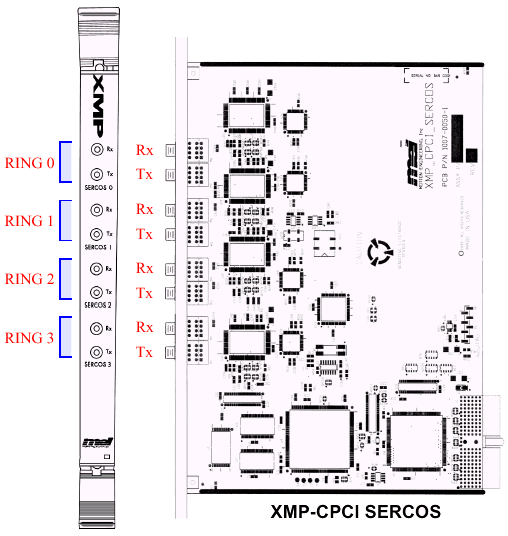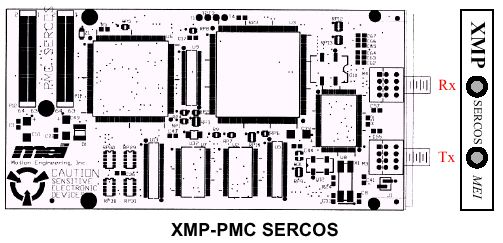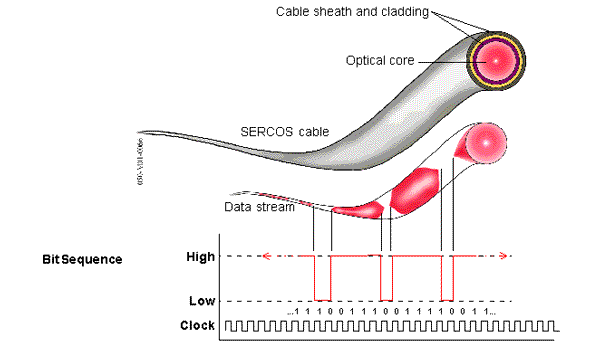| CHAPTER 5 XMP Controller MotionDrive I/O: Sercos | ||||||||||
XMP-SERCOS Connector Ports

Connector ports on XMP-SERCOS controllers are labeled "Tx" (transmitter) and "Rx" (receiver). The diagram above shows connector locations for both the XMP-SERCOS-PMC and XMP-CPCI-SERCOS controllers. The XMP-SERCOS-PCI-S1 and -S2 controllers are not shown.
SERCOS cables are connected by inserting them gently into their ports and rotating the metal ferrule until snug. The XMP controller and all SERCOS devices should be configured in a ring (or "daisy chain") such that the "Tx" port of one device is plugged into the "Rx" of a neighboring device in the ring. Internal SERCOS Controller Hardware and Signal StructureBoth PMC and CPCI XMP-SERCOS controllers are designed to be firmware- and software-compatible with the standard MPI/XMP libraries, while providing control to the SERCOS ASIC. All the motion blocks normally found in the XMP are available on these controllers. The XMP-SERCOS-PMC and XMP-SERCOS-CPCI controllers each contain SERCOS ASICs, opto couplers, and control logic sufficient to control 1 to 4 independent SERCOS rings. Each ring is capable of independently supporting 2, 4, 8, 10, or 16MHz data rates. Bit CodingSERCOS signals are conveyed optically as a series of discretely modulated light pulses from each device's transmitter to the adjoining device's receiver. Information is NRZI-coded (Non Return to Zero Inverted), with a retrievable clock signal. Information is encoded using a 0 where there is a transition, and a 1 where there is no transition. To ensure that clock pulses remain retrievable from the transmitted signal, zeros are forced (bit-stuffed) into the data stream every eight bits. 
A full description of NRZI coding and SERCOS is included within Section 5.5 of the publication entitled "Electrical Equipment of Industrial Machines--Serial Data Link for Real-time Communication Between Controls and Drives" from the International Electrotechnical Commission. | |||||||||||